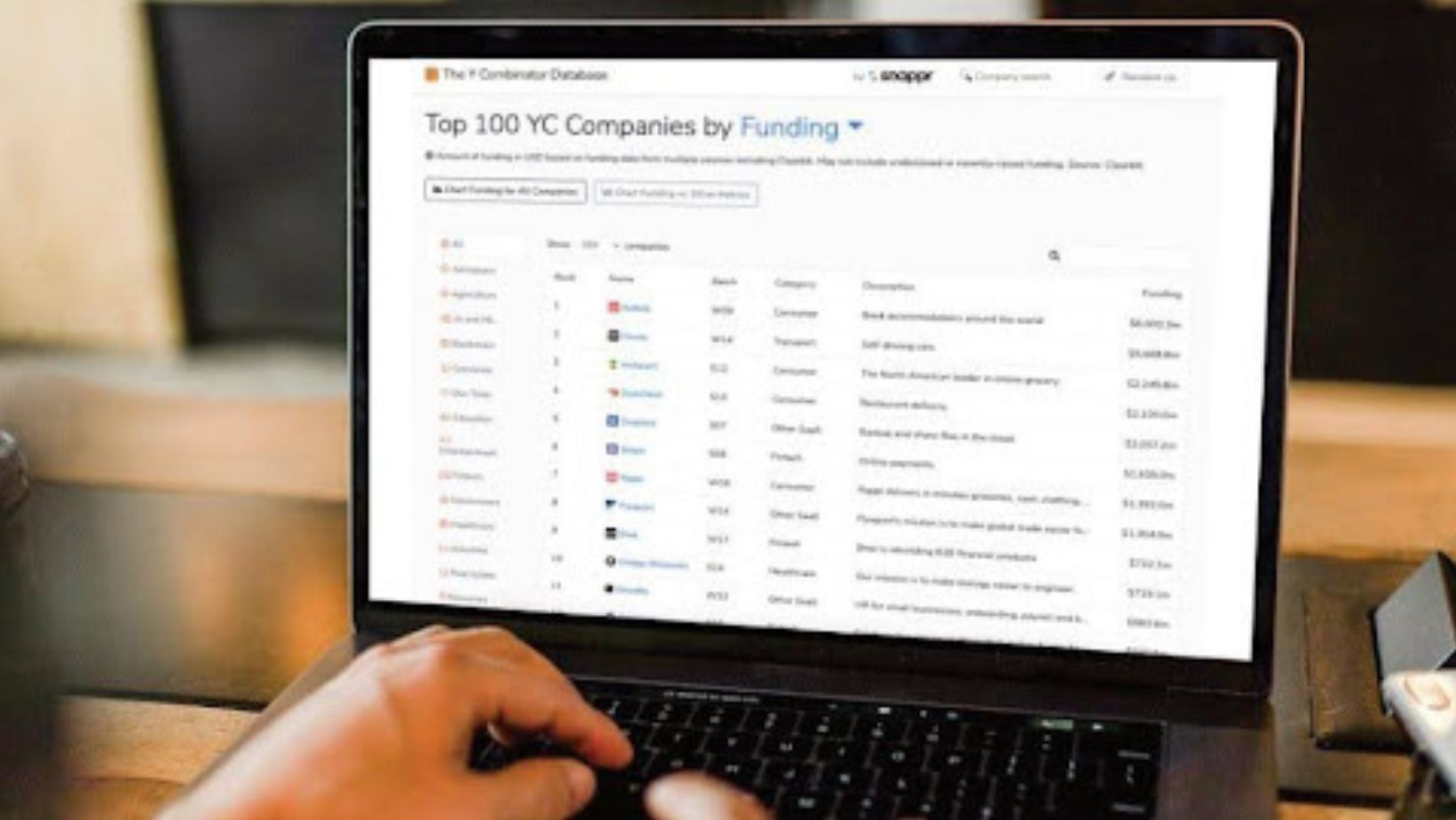Between 2014 and 2019, over 100 AI startups pitched their dreams to Sam Altman at Y Combinator. Most failed spectacularly. A few became household names. But watching this parade of artificial intelligence ambition gave Altman pattern recognition on an industrial scale.
While tech pundits debated AI’s theoretical potential in conference rooms, Altman sat across folding tables from founders betting their lives on machine learning models that barely worked. He watched brilliant engineers explain why their chatbot would revolutionize customer service, then watched those same companies pivot to selling dog food because the AI wasn’t ready. Every Tuesday and Thursday, another batch of AI hopefuls would file into YC’s Mountain View offices, ready to convince Altman their particular flavor of machine intelligence would change everything. The irony is delicious. While Altman was turning down hundreds of AI startups that seemed too ambitious or too early, he was quietly developing the instinct. Those five years of saying no taught him exactly when to say yes.
The Startup Accelerator as an AI Observatory
Y Combinator had always been a crystal ball for tech trends, but Altman’s tenure coincided with the transformation of AI from academic curiosity to venture capital obsession. When he took over from Paul Graham in 2014, machine learning was still mostly confined to research labs and Google’s server farms. By the time he stepped back in 2019, every startup pitch deck in Silicon Valley included the word “AI” at least three times.
The accelerator’s track record with companies like Airbnb and Dropbox made it the obvious launching pad for anyone who believed they could ride the wave to unicorn status. Altman’s appointment as president in 2014 came just as deep learning was beginning to show real commercial promise. The timing was perfect, even if nobody realized it yet. GraphQL was still a Facebook experiment. Docker was barely two years old. And neural networks were just starting to get interesting again after decades of false starts.

Here’s what made Altman’s position unique. He wasn’t just watching AI evolve from the outside. He was seeing it through the lens of entrepreneurial execution. Academic researchers could publish papers about theoretical breakthroughs, but the founders sitting across from Altman had to make their AI actually work well enough to build a business around it. The gap between those two realities was often enormous. Take computer vision, which was one of the first AI domains to seem commercially viable. Altman watched dozens of startups promise to revolutionize retail, healthcare, and manufacturing with image recognition technology. Most discovered that getting 95% accuracy in a research lab was very different from getting 99.9% accuracy in a production environment where mistakes cost real money.
The pattern repeated across every AI subfield. Natural language processing startups would demo impressive chatbots, then struggle to handle the chaos of actual human conversation. Recommendation engines worked brilliantly on clean datasets, then broke down when exposed to the messy realities of user behavior.
The Successful Exceptions That Proved the Rule
The AI startups that thrived during Altman’s YC years weren’t necessarily the ones with the most sophisticated algorithms. They were the ones who found ways to create value even when their AI was imperfect. They built businesses that could improve gradually as the underlying technology got better, rather than companies that required immediate technological perfection. Y Combinator’s portfolio during this period included companies that would later become part of the $600 billion combined valuation, and many of the most successful ones found clever ways to work around AI’s limitations rather than waiting for AI to solve all their problems.
These successful companies shared certain characteristics that Altman learned to recognize. They focused on narrow, well-defined problems where imperfect AI could still create meaningful value. They built feedback loops that allowed their systems to improve over time. They designed their products so that human intelligence could seamlessly complement machine intelligence when the AI inevitably failed. Most importantly, they positioned themselves as companies that happened to use AI to solve real problems. The distinction mattered because customers don’t buy AI for being AI. They buy solutions they find useful. Here’s a good example. Consider AI companion services like Candy AI. While these services are powered by sophisticated large language models running behind the scenes, many users will readily subscribe to the companion service while showing little interest in accessing the underlying LLM directly. The specialized application creates tangible value that the raw technology alone cannot deliver. Users aren’t paying for access to AI in this case. They’re paying for companionship, entertainment, or emotional connection that happens to be delivered through AI. This was something Altman acknowledged as well.
The Transition to OpenAI
When he transitioned from YC president to OpenAI CEO in March 2019, he was applying five years of accumulated wisdom about AI’s commercial potential to one of the most ambitious AI research projects in history.
The timing was perfect in ways that only make sense in retrospect. Altman had spent the previous five years watching hundreds of AI startups fail, and now he was joining a company with genuinely groundbreaking technology that was on the verge of a breakthrough that would redefine the entire field. But here’s the thing. OpenAI in 2019 was still very much a research organization. It had impressive technology, but it hadn’t yet figured out how to turn that technology into products that normal people would want to use. This is exactly the problem that Altman had become an expert at solving during his Y Combinator years.
The lessons from there were everywhere in OpenAI’s subsequent strategy. Instead of trying to build perfect AI, they focused on building AI that was good enough to be useful. Instead of targeting enterprise customers who would demand perfection, they started with consumers who were more forgiving of imperfection. Instead of positioning themselves as an AI company, they positioned themselves as a company building tools that happened to be powered by AI. Most crucially, they understood something that many of the failed YC AI companies had missed, and that’s the importance of feedback loops. ChatGPT wasn’t just impressive because of its underlying technology, but because it was designed to get better through interaction with real users, solving real problems.
The Ethical Dimension
Altman’s Y Combinator experience gave him a front-row seat to the ethical challenges that emerge when AI technology meets real-world deployment. Many of the AI startups he encountered had to grapple with questions about bias, privacy, job displacement, and algorithmic accountability. These were practical business problems that could kill companies if handled incorrectly. Altman watched startups struggle with biased training data, get burned by privacy regulations, and face public backlash when their AI systems made mistakes that affected real people’s lives.
This practical exposure to AI ethics informed Altman’s later approach to AI safety and governance. He had seen firsthand how quickly AI systems could go wrong when deployed without sufficient consideration of their broader impact. He had watched companies get blindsided by ethical problems they hadn’t anticipated because they were too focused on technical performance metrics. The experience from the Y Combinator taught him that responsible AI development is strategically essential.
Building the AI Ecosystem
Perhaps most importantly, Altman’s time at YC gave him something that can’t be replicated. A relationship with hundreds of AI entrepreneurs, researchers, and investors who were all working on different pieces of the same puzzle. This network became invaluable when he moved to OpenAI and needed to understand how their breakthroughs would fit into the broader AI ecosystem. Today, AI has become so central to the startup ecosystem that about a quarter of current YC startups have 95% of their code written by AI models. But the foundation for that transformation was laid during Altman’s tenure, when he was building relationships with the people who would later become key players in the AI revolution.
The network effect worked in both directions. Altman was also shaping their thinking about what was possible and what was practical. His pattern recognition of AI’s commercial potential influenced a generation of founders who went on to build successful AI companies. This created a virtuous cycle. The better Altman got at identifying promising AI startups, the more successful AI entrepreneurs wanted to work with YC. The more successful AI entrepreneurs who worked with YC, the more Altman learned about what worked and what didn’t in AI commercialization.
Strategic Patience in a Hyped Market
Altman also learned about AI timing. The AI market has always been characterized by cycles of hype and disappointment, but Altman had a unique vantage point for understanding these cycles. He watched the machine learning boom. He saw the inevitable correction when investors got burned by companies that couldn’t deliver on their AI promises. And he observed the gradual maturation of the field as genuinely useful AI applications finally started to emerge.
This gave him an appreciation for strategic patience that would prove crucial at OpenAI. While competitors were rushing to market with half-baked AI products, Altman understood the importance of waiting until the technology was actually ready to create sustainable value.
The Observatory Advantage
Sam Altman’s time at Y Combinator gave him something that money can’t buy and experience can’t easily replicate, and that’s a systematic view of AI’s evolution from laboratory curiosity to world-changing technology.
The lesson here isn’t just about Sam Altman or Y Combinator or even AI. It’s about the value of being in the right place at the right time with the right mindset. Altman could have spent those five years building his own AI startup or investing in AI companies, or writing about AI trends. Instead, he spent them in the unique position of evaluating AI’s commercial potential from every possible angle.
That observatory advantage made all the difference. When the moment came to bet everything on a breakthrough AI technology, Altman had already seen every way that bet could go wrong and every way it could go right. He had developed the pattern recognition needed to distinguish between genuine technological progress and elaborate wishful thinking. And he had built the network and relationships needed to turn a breakthrough into a business.
The future of AI will be shaped by people who understand both its technical potential and its practical limitations. Altman’s YC experience gave him exactly that understanding, and it shows in everything OpenAI has accomplished since. The next generation of AI leaders would do well to find their own observatory positions where they can develop the same kind of systematic insight into what works, what doesn’t, and why.















